![]() The information provided by our expert should not constitute a diagnosis of your condition. Always consult a medical practitioner or healthcare provider for a formal diagnosis. By making use of this content, you agree that ConceiveEasy and the expert assume no liability.
The information provided by our expert should not constitute a diagnosis of your condition. Always consult a medical practitioner or healthcare provider for a formal diagnosis. By making use of this content, you agree that ConceiveEasy and the expert assume no liability.
Have you and your partner decided that you want to start trying to conceive? That is a huge step, and you will need to make some major adjustments in order to increase the chances of that happening. Claim Your 20 Free Ovulation Tests – Click Here
The first thing that both you and your partner need to do is see the doctor in order to make sure you are both in decent enough shape to start trying.
For instance, if you need to gain or lose weight, your doctor will tell you and you will need to listen to your doctor. Your partner’s weight is important too because if he is extremely under or overweight, that can very well affect his fertility as well.
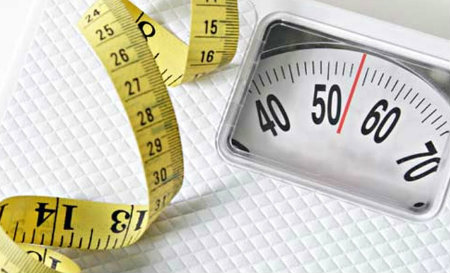
If you need to see a dietician or nutritionist that specializes in fertility in order to help you lose or gain weight- or just to get into a healthy lifestyle, then that is a smart thing to do.
Your blood pressure and blood sugar levels will be assessed too. If your doctor gives you the green light to start trying- even while making adjustments with your weight if necessary, then chances are your doctor will tell you to get a body basal thermometer to start charting your cycles, and to find out when in your cycle you are ovulating.

What is the Billings Method?
In fact, your doctor may tell you to follow the Billings Ovulation Method. However, the odds of that are not that high as your doctor will tell you that you need to buy a body basal thermometer instead. And, if you want to learn about the Billings Ovulation Method regardless of whether your doctor discusses it with you or not, then you will learn about that right here.
History – Dr. John and Evelyn Billings of Melbourne, Australia in the 1950s came up with a method to help women find their most fertile time in their cycles, and it has worked. The Billings Method is also known as the Ovulation Method and this has helped couples either prevent pregnancies from happening- or helping them find their most fertile time to increase their chances of conceiving.
How it Works – Though, there is no guarantee that even if you have sex during your least fertile time that you won’t get pregnant since sperm can stay in your system for a long time- especially if you have a 21-day cycle and you ovulate on day 7 of that cycle.
Finding Fertile Time – Or even if you have sex during your luteal phase, which is the period between ovulation and menstruation when you are also the least fertile- there is no guarantee again that you won’t get pregnant. That is again because there could be powerful sperm that can stick around for a very long time. The likelihood however is low, but it is not a guarantee!
Abstinence – The only guarantee in regards to not getting pregnant at all is pure abstinence because even the most powerful birth control methods are not foolproof- especially if they are used incorrectly.
However, the odds of you not conceiving while you have sex during your least fertile time are most definitely in your favor – just like there is no guarantee that you will get pregnant when you do have intercourse during your most fertile time of your cycle. Especially if your partner’s sperm count is low, or has slow sperm or abnormally shaped sperm.
However, since you are now wondering what this method is all about, let’s take this opportunity to talk about what The Billings Method involves:

What Is Involved With The Billings Method?
The first thing that all women need to be aware of is that their cervix produces mucus that is of different consistency each day during their cycles. And this is what women who want to rely on the Billings Method need to do in order to increase their chances of conceiving- to get to know the mucus.
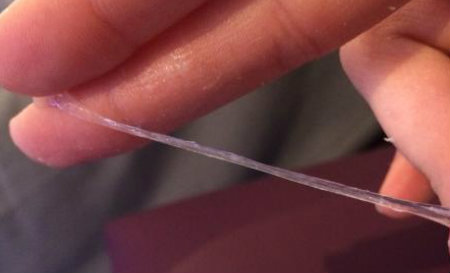
They need to feel around their vulva for the cervical mucus to understand its consistency. And right after a woman finishes her period, that is when the mucus is going to be scant and dry. Therefore, it is the least fertile time, and it will be dry for several days after the period if the cycle is at least 28 days that is.
For a 21-day cycle, the dry mucus may be noticeable for a day, then things start to change fast. As the cycle progresses, the mucus becomes sticky and has a cloudy appearance.
However, about 1 to 3 days before ovulation, the mucus begins to become more abundant and ends up having an appearance of egg whites. This consistency of the mucus is the most fertile. Therefore, this is the time to have intercourse in order to increase the chances of conception happening.
The cervix at this stage is also high up and soft, whereas in other parts of the cycle it is hard and low. That means your cervix is allowing the sperm to enter your reproductive tract so you have a high chance of getting pregnant.
The Billings Method Does Not Require a BBT
The great thing about the Billings Method is that you are not required to take your body basal temperature like your doctor suggested if you choose not to. You also don’t necessarily have to check your cervical position either.
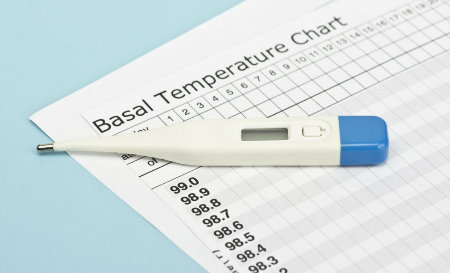
All you need to do is to become aware of the mucus that you are producing as if you are seeing clear mucus on your underwear – that is a sign that you are in your fertile time. That said, if you are not producing any mucus by the fact that you are not leaking on your underwear or you don’t feel much of it around your vulva, then you are not at a fertile time of your cycle.
However, in order for you to get a good look at the cervical mucus that you are producing at any time during your cycle- it is best to feel around your vulva in order to collect the mucus.
If you have noticed that your mucus was abundant and had a texture and appearance like egg whites for a few days, then it is sticky and cloudy again, then that means the fertile opportunity was lost. You had already ovulated and you are now in your luteal phase.

How Reliable Is The Billings Method?
The one concern that many women have over The Billings Method is the reliability. And, that is a legitimate concern since not every woman will feel or see any noticeable changes in their vulva area during their cycles In that case, The Billings Method will not be reliable.

This usually applies to women in their late 30’s to early 40’s, when their mucus is less fertile. However, if you don’t notice any changes and you are still younger than 35, you may have to check your mucus internally.

What Happens If There Is No Fertile Mucus Detected?
If you don’t have any kind of noticeable changes in your cervical mucus, that does not necessarily mean you are not ovulating. Again, you would have to check internally to check it more effectively. However, what you will want to do is if you suspect you are not ovulating is to get a body basal thermometer to confirm that.
You can get these thermometers at any drugstore like Walgreens or CVS, and in Canada, they can be purchased at Shoppers Drugmart or Rexall. Many of them come with graph paper, but if not you will want to purchase some so you can mark down your temperature.
You do have to start taking your temperature when you get your period and be sure to leave the thermometer on the nightstand that is literally within your reach without having to move much.

Too much movement will alter the temperature, and you won’t get an accurate reading. That means as soon as you wake up, you will need to take your temperature right away before you do anything like go to the bathroom.
Once you have your temperature, mark it down and when you have ovulated the temperature will go up less than 1 degree Fahrenheit. And the temperature will stay up during your luteal phase until you get your period as the rising progesterone levels are what causes the temperature to go up.
That means if you don’t detect any fertile cervical mucus or the mucus consistency does not change throughout your cycle, taking your temperature will indicate whether you are ovulating or not. Chances are, you are ovulating if you have regular periods even if they are off by a few days here and there.
However, if you have cycles that are extremely irregular by weeks, then that is an indicator that you are not ovulating.
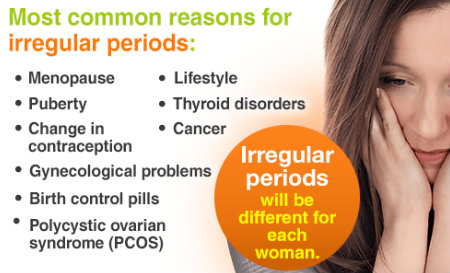
And, if you have taken your temperature for 3 cycles and have not seen a spike at all while you are not noticing any changes in your cervical mucus, then you are clearly not ovulating. And, you may be tempted to run to the doctor if you have noticed that you are not ovulating at all. And, you should have it checked.
However, you can also make changes to your diet and lifestyle, in general, to see if you can start having ovulatory cycles.

Steps To Increase Chances Of Ovulation On Your Own
The first thing that you need to do in order to increase the chances of ovulation happening on your own is to evaluate your own lifestyle and diet. If you are seeing a nutritionist that specializes in fertility or is knowledgeable of fertility-friendly foods, then you should be using the tips that are suggested.
You will want to put a tight limit on refined carbs such as white bread, white pasta, white rice, sugary cereals, candies and potato chips as those foods will cause your insulin levels to spike, along with your blood sugar levels. That will inhibit ovulation from happening and cause your cycles to be anovulatory.
You can enjoy a treat on the weekend such as a candy bar or a sundae but keep it limited. The same goes for foods that are high in trans fats like fast food and pastries.

You will want to stick with whole grains and complex carb foods to provide you the energy you need without spiking your blood sugar and insulin levels. Besides, whole grain foods have properties that help improve fertility like whole-grain bread, whole-grain pasta, brown rice, plain popcorn, fruits, and vegetables.
You will want to also increase foods in your diet that are rich in good healthy fats like avocados, eggs, salmon, nuts, and seeds.
You also need healthy proteins from lean meats, beans, lentils, and nuts.
Also, it is important to take in full-fat dairy products like whole milk, full-fat yogurt, and cheese. And, be sure to get moderate exercise such as taking half-hour brisk walks for 5 days a week, and you need to get 7 to 8 hours of sleep each night.
Also, if you are stressed out, you need to learn to manage stress such as taking up yoga or meditation classes or simply unwinding each evening by watching a comedy or listening to soothing music or reading a light-natured book. You already know to stay away from smoking, booze, and drugs.

If you still have not seen any signs of ovulation by using The Billings Method and taking your temperature each morning after implementing fertility-boosting lifestyle changes for 3 months, then that is the time to see your doctor as you will need to have your hormones check and likely be put on Clomid to help induce ovulation.
It may take several changes in dosages or even a different fertility drug. However, chances are you will ovulate with the help of the right dosage of the drug that works best for you in conjunction with a healthy diet consisted of fertility-boosting foods.
And, implementing moderate exercise, making sure you get plenty of sleep, and are able to manage stress effectively will increase your odds as well.
Once you are ovulating, and if you are under 35 years of age, chances are The Billings Method will work for you and you will know when your fertile time is!



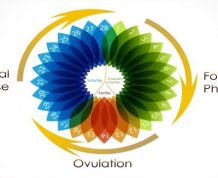

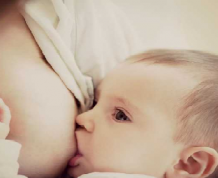

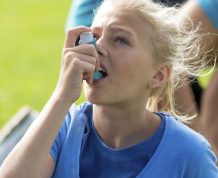



Comments